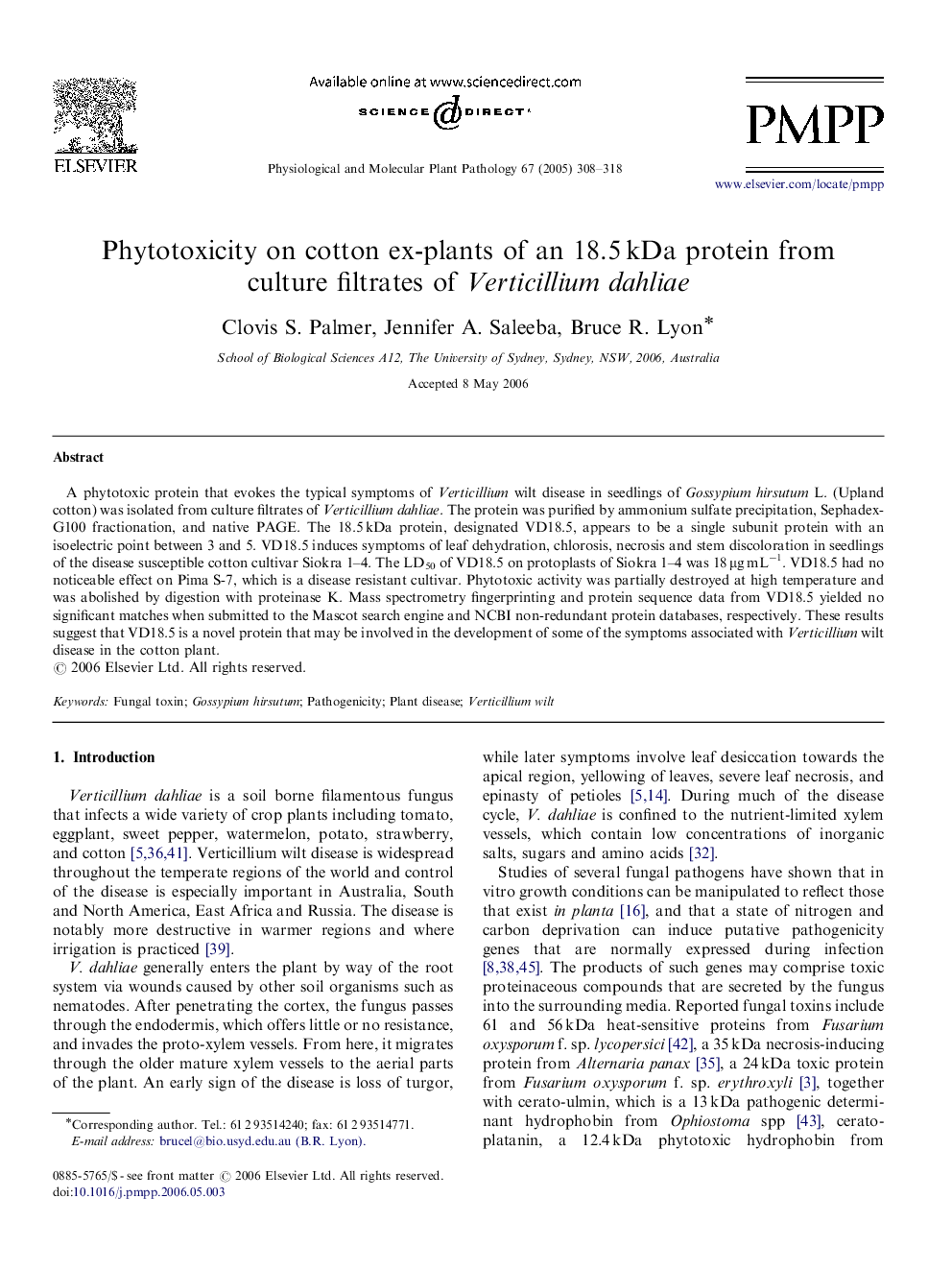| Article ID | Journal | Published Year | Pages | File Type |
|---|---|---|---|---|
| 9144597 | Physiological and Molecular Plant Pathology | 2005 | 11 Pages |
Abstract
A phytotoxic protein that evokes the typical symptoms of Verticillium wilt disease in seedlings of Gossypium hirsutum L. (Upland cotton) was isolated from culture filtrates of Verticillium dahliae. The protein was purified by ammonium sulfate precipitation, Sephadex-G100 fractionation, and native PAGE. The 18.5 kDa protein, designated VD18.5, appears to be a single subunit protein with an isoelectric point between 3 and 5. VD18.5 induces symptoms of leaf dehydration, chlorosis, necrosis and stem discoloration in seedlings of the disease susceptible cotton cultivar Siokra 1-4. The LD50 of VD18.5 on protoplasts of Siokra 1-4 was 18 μg mLâ1. VD18.5 had no noticeable effect on Pima S-7, which is a disease resistant cultivar. Phytotoxic activity was partially destroyed at high temperature and was abolished by digestion with proteinase K. Mass spectrometry fingerprinting and protein sequence data from VD18.5 yielded no significant matches when submitted to the Mascot search engine and NCBI non-redundant protein databases, respectively. These results suggest that VD18.5 is a novel protein that may be involved in the development of some of the symptoms associated with Verticillium wilt disease in the cotton plant.
Related Topics
Life Sciences
Agricultural and Biological Sciences
Plant Science
Authors
Clovis S. Palmer, Jennifer A. Saleeba, Bruce R. Lyon,
